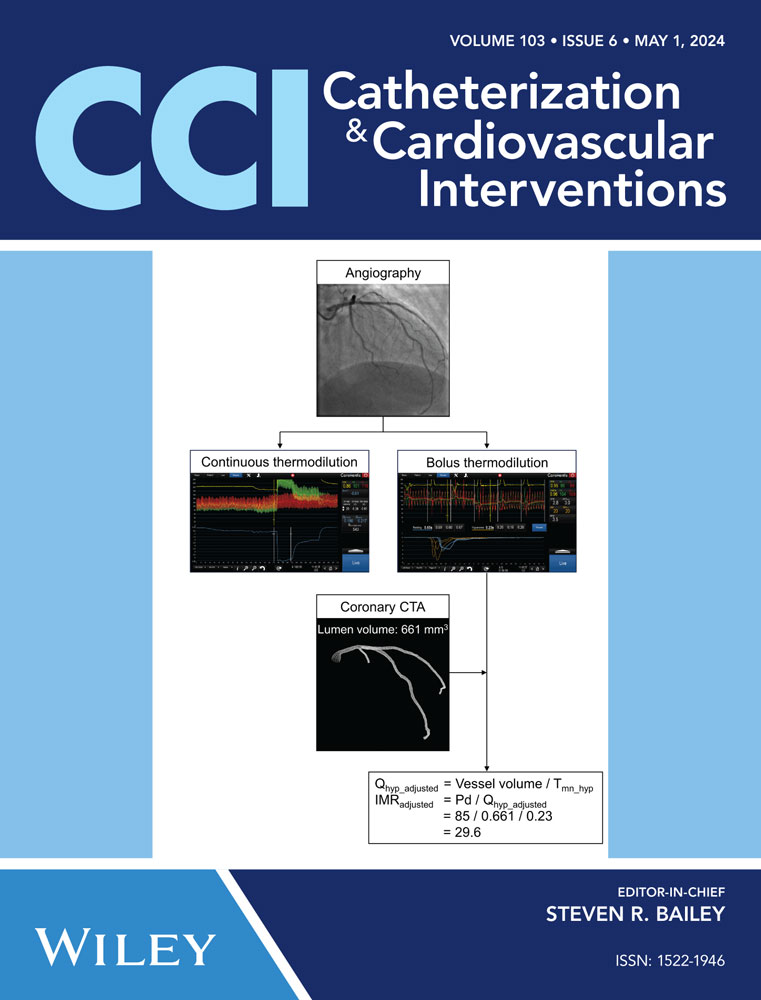Prevalence and anatomical factors associated with stent under-expansion in non-severely calcified lesions
Abstract
Background
Stent underexpansion, typically related to lesion calcification, is the strongest predictor of adverse events after percutaneous coronary intervention (PCI). Although uncommon, underexpansion may also occur in non-severely calcified lesions.
Aim
We sought to identify the prevalence and anatomical characteristics of underexpansion in non-severely calcified lesions.
Methods
We included 993 patients who underwent optical coherence tomography-guided PCI of 1051 de novo lesions with maximum calcium arc <180°. Negative remodeling (NR) was the smallest lesion site external elastic lamina diameter that was also smaller than the distal reference. Stent expansion was evaluated using a linear regression model accounting for vessel tapering; underexpansion required both stent expansion <70% and stent area <4.5mm2.
Results
Underexpansion was observed in 3.6% of non-heavily calcified lesions (38/1051). Pre-stent maximum calcium arc and thickness were greater in lesions with versus without underexpansion (median 119° vs. 85°, p = 0.002; median 0.95 mm vs. 0.78 mm, p = 0.008). NR was also more common in lesions with underexpansion (44.7% vs. 24.5%, p = 0.007). In the multivariable logistic regression model, larger and thicker eccentric calcium, mid left anterior descending artery (LAD) location, and NR were associated with underexpansion in non-severely calcified lesions. The rate of underexpansion was especially high (30.7%) in lesions exhibiting all three morphologies. Two-year TLF tended to be higher in underexpanded versus non-underexpanded stents (9.7% vs. 3.7%, unadjusted hazard ratio [95% confidence interval] = 3.02 [0.92, 9.58], p = 0.06).
Conclusion
Although underexpansion in the absence of severe calcium (<180°) is uncommon, mid-LAD lesions with NR and large and thick eccentric calcium were associated with underexpansion.
CONFLICTS OF INTEREST STATEMENT
TS – no disclosure. MM – Consultant for Boston Scientific and TERUMO. KY – no disclosure. ES – consultant to Abbott Vascular, Medtronic and Opsens Medical. JWM – no disclosures. OKK – received speaker fees from Edwards Lifesciences. DS – no disclosures. AD – no disclosures. MS – no disclosures. SM – no disclosures. AT – no disclosures. DJC – Research grant support - Abbott, Boston Scientific, Edwards Lifesciences, Medtronic; consulting income - Abbott, Boston Scientific, Edwards Lifesciences, Medtronic. GSM – received honoraria from Boston Scientific/Philips/SpectraWave/Gentuity. RAS – speaker for Shockwave Medical. AJ – institutional grants and consulting fees, Abbott Vascular and Philips/Volcano; consultant fees, ACIST and Boston Scientific. ZAA – institutional research grants for Columbia University from Abbott, Cardiovascular Systems Inc.; serving as a consultant for Abbott, Abiomed, AstraZeneca, and Shockwave Medical. AM – Grant support and consultant - Abbott Vascular and Boston Scientific; consultant fees, Conavi Medical Inc.
Open Research
DATA AVAILABILITY STATEMENT
The data that support the findings of this study are available on request from the corresponding author (Ali ZA). The data are not publicly available due to (restrictions e.g., their containing information that could compromise the privacy of research participants).




